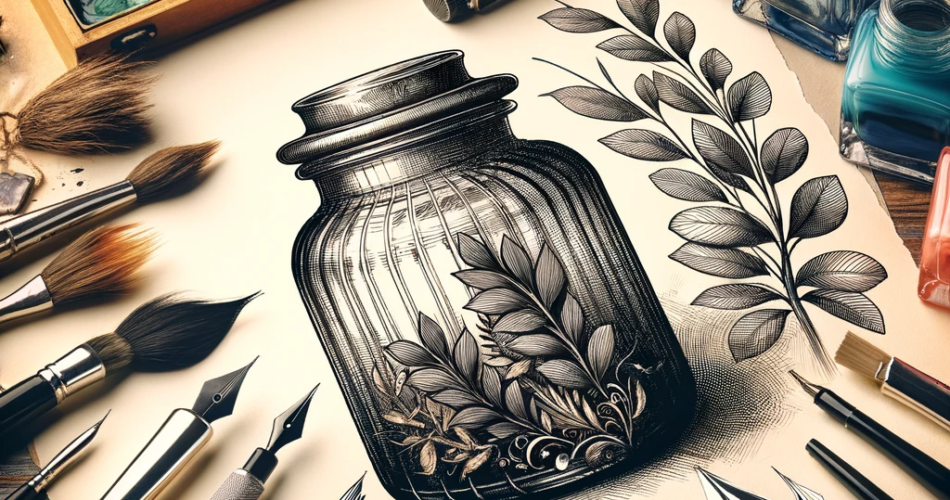Table of Contents
Introduction
Inking a jar requires a delicate balance of precision and creativity, particularly when capturing its transparent nature and reflective qualities.
This guide will provide you with the techniques needed to ink a jar that looks both realistic and artistically appealing.
Key Takeaways:
- Mastering the art of inking glass textures.
- Selecting the right tools for precision and detail.
- Techniques to portray reflections and transparency.
- Enhancing your jar illustrations with realistic effects.
Choosing Your Tools
1. Selecting Inking Tools:
For glass textures, fine liner pens and brush pens are ideal. They offer the precision needed for detailed work.
2. Inks and Colors:
Although jars are often transparent, using subtle shades of blue or gray can help suggest glass. Experiment with light and shadow to achieve a realistic effect.
The Inking Process
1. Sketching: Begin with a light pencil sketch, focusing on the jar’s shape and proportions.
2. Outlining: Use a fine pen to ink the outline, capturing the jar’s smooth curves and edges.
3. Texturing: The key to inking a jar lies in depicting its texture. Use light strokes to suggest the glass’s smoothness and add fine lines for reflections.
4. Adding Shadows and Highlights: Shadows and highlights are crucial for conveying the jar’s transparency and the way light passes through it.
Enhancing Your Artwork
1. Background Considerations: A simple background can help the jar stand out, while a more detailed setting can give context, like placing the jar on a table.
2. Depicting Contents: If the jar has contents, such as jam or marbles, use colors and textures to differentiate them from the jar itself.
FAQs on How to Ink a Jar
Q: What are some tips for capturing the reflective surface of a glass jar?
A: Use contrasting lines and shading to depict reflections and the play of light on the jar’s surface.
Q: How can I make the jar appear more three-dimensional?
A: Focus on accurate shading around the curves and edges to give the jar depth and volume.
Q: Is it necessary to color a jar in an ink drawing?
A: While not necessary, subtle coloring can enhance the jar’s realism, especially when depicting glass.
Q: How do I handle the challenge of inking transparent objects?
A: Emphasize shadows and highlights to suggest transparency, and use fine lines to represent reflections and refractions.



